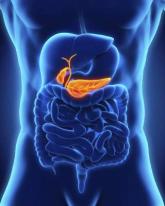News

Biopsy bests HCRT for lung fibrosis, has risks
- Author:
- Richard M. Kirkner
Key clinical point: Surgical lung biopsy is helpful to confirm interstitial lung disease in patients with unique signs and symptoms, but the...
News

Why cardiac surgeons must adopt percutaneous skills
- Author:
- Richard M. Kirkner
Cardiac surgeons must adapt to stay relevant in the future, and that means acquiring skills to perform percutaneous procedures
News

Pneumonia most deadly emergency surgery complication
- Author:
- Richard M. Kirkner
Key clinical point: Target pneumonia for prevention after emergency general surgery. Major finding: Emergency operations account for only 15% of...
News

Splenectomy rare after first 24 hours in trauma, early trial results show
- Author:
- Richard M. Kirkner
Key clinical point: Follow-up angiography and CT may not be necessary for trauma patients with blunt spleen injury because of the low rates of...
News
PROOVIT registry results make case for expansion
- Author:
- Richard M. Kirkner
Key clinical point: Gathering previously uncollected information on management of trauma-related vascular injuries can inform treatment and may...
News

Antihypertension drugs may have clotting protection in obese trauma patients
- Author:
- Richard M. Kirkner
Key clinical point: ACE-I and ARB medications may help obese trauma patients maintain trauma scores similar to nonobese patients. Major finding:...
News

Same-day combined ERCP and cholecystectomy: achievable and cost effective
- Author:
- Richard M. Kirkner
Key clinical point: Scheduling both ERCP and cholecystectomy on the same day reduces hospital stays and saves money. Major finding: Patients who...
News

CTA before visceral arteriography improves bleed identification, localization
- Author:
- Richard M. Kirkner
Key clinical point: In patients with lower GI hemorrhage, performing CT angiography before visceral arteriography can improve diagnostic accuracy...
News
Acute Kidney Injury Implicated in Multiple Organ Failure
- Author:
- Richard M. Kirkner
Major Finding: Early kidney failure was associated with a 19-fold increased risk of multiple organ failure and a sixfold higher risk of death.Data...
News
'Play or Pay' Underwrites Trauma Costs in Mississippi
- Author:
- Richard M. Kirkner
Major Finding: A "play or pay" policy for trauma centers offset the negative impact of a change in payer mix.Data Source: Some 2,815 patients in...
News
New Data Add to Debate Over Optimal Transfusion Ratio
- Author:
- Richard M. Kirkner
Major Finding: A fresh frozen plasma–to–red blood cells ratio greater than 0.4:1 can stanch bleeding without causing organ failure. Data Source: A...
News
Trauma Funding Cuts May Jeopardize Care of Immigrants
- Author:
- Richard M. Kirkner
Major Finding: Trauma centers are losing major funding sources that subsidize care of undocumented immigrants. Data Source: Retrospective study of...
News
Survival Trends Promising in Geriatric Trauma Patients
- Author:
- Richard M. Kirkner
Major Finding: Long-term survival in geriatric trauma patients may not be as poor as once thought. Almost two-thirds of the patients who survived...
News
Doubt Cast on Protocol for VAP Resolution
- Author:
- Richard M. Kirkner
Major Finding: The Clinical Pulmonary Infection Score (CPIS) is not a reliable indicator for determining resolution of ventilator-associated...
News
Are Benchmarks the Problem for High VAP Rates?
- Author:
- Richard M. Kirkner
Major Finding: AAST study shows major trauma centers have higher VAP rates than do national benchmark data.Data Source: Retrospective analysis of...
